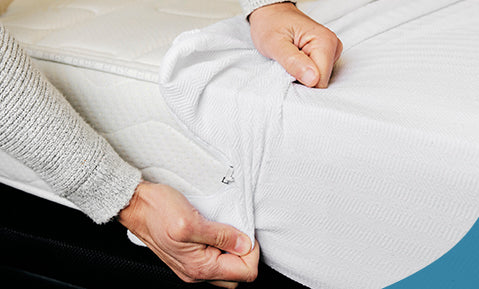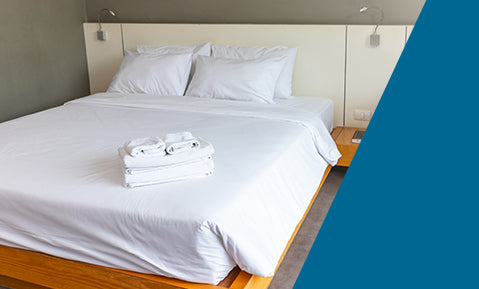
Before diving straight into the topic ‘biphasic sleep’, let us first understand the importance of sleep in our lives, the different stages of sleep, mechanisms of sleep, how much sleep we need and the different patterns of sleep, which will help us to understand the topic better.
Importance of sleep

We all know that sleep is important for our overall well being. The one third of our lives that we spend sleeping, is an absolute necessity for a good quality of life. It wont be an overestimation to say that, ‘a good sleep is as important as the food we eat and the air we breathe’. Not only the quantity of sleep (the amount of time we sleep) but the quality of sleep ( how well we sleep) also matters. We will see how in the following sections.
Why do we need to sleep?
The biological purpose of sleep still remains a mystery. However, what we know is how sleep affects the various systems of our body.
- Memory: formation and processing of memories is affected by sleep
- Cognition (mental processes involved in learning, knowing and understanding things): sleep affects the stress hormones. Disruption of sleep affects cognition
- Performance: the performance of a person in all spheres of life is negatively affected by lack of sleep
- Calorie regulation: evidence suggests that a good sleep at night enables a person to consume lesser calories
- Lower risk of gaining weight: although the link between short sleep pattern and obesity remains unclear, several studies indicate that poor sleep pattern can be associated with obesity. According to researchers, poor sleep leads to higher levels of the hunger hormone, ‘ghrelin’, inflammation (it is a painful swelling or redness in any part of the body due to an injury, infection or illness) markers and retention of salt.
- Lower risk of any heart disease: according to CDC (Centers for Disease Control and Prevention) proper sleep regulates the blood pressure, high blood pressure being a risk factor for several heart diseases. People who do not get enough sleep at life are at a risk to develop
- Obesity
- Coronary heart disease
- Stroke
- High blood pressure
- Prevents depression: insufficient sleep results in impaired emotional stability and regulation as well as cognitive alterations. Studies have concluded that insomnia (condition when a person is unable to sleep, over a time period) significantly increases the risk of depression.
- Metabolism: inadequate sleep leads to
- Increased hormone levels which control a person’s hunger (ghrelin and leptin)
- Increased food consumption especially sweet, fatty and salty foods
- Reduced response to insulin
- Metabolic syndrome or insulin resistance syndrome (a group of factors together which increases the risk of diabetes, coronary heart disease, stroke and other serious health issues). It also affects the cognitive function
- Reduced physical activity
- Stronger immune system (the cells of the body which enables it to protect itself from any infection): sleep leads to regeneration., repair and recovery of the body. Proper sleep strengthens the immune system.
- In children and teenagers proper sleep leads to proper development and growth. Inadequate sleep increases the risk of long term health issues.
Mechanisms of sleep
There are two internal (inside the body) biological mechanisms that work together and regulate the sleep-awake cycle
- Circadian rhythms: this controls a variety of bodily functions. The sleep timing is controlled by the circadian rhythm which wakes up a person in the morning by themselves and makes them sleepy at night. The circadian rhythm is mostly controlled by the biological clock of the body which is based on approximately 24 hour day
- Sleep-wake homeostasis: this tracks the need for sleep. The sleep-wake homeostasis regulates the intensity of sleep and reminds a person’s body after a certain period of wakefulness that it needs to sleep.
Stages of sleep

Basically, there are two phases of sleep:
- REM (rapid eye movement) sleep
- NREM (non rapid eye movement) sleep. NREM sleep has three stages-N1,N2 and N3.
- Stage 1 NREM (N1): Light sleep- This stage lasts from 1-5 minutes and constitutes 5% of the total sleep of a person
- Stage 2 NREM (N2): Deeper sleep- the first cycle lasts for around 25 minutes and the time increases in each subsequent cycle. This stage constitutes 45% of total sleep
- Stage 3 NREM (N3): Deepest sleep- this is the stage of sleep because of which the person feels refreshed after waking up. At this stage, the immune system strengthens, repair of the body takes place, tissues regrow and, building up of bone and muscle occurs. Night terrors, sleepwalking and bedwetting too occurs in this stage.
- Stage 4 REM: Dreaming- the brain is highly active in this stage. This sleep is not restful and there is dreaming. The brain waves are similar to when a person is awake. This stage usually starts after 90 minutes of falling asleep. The first period lasts for 10 minutes and the final one lasts for nearly an hour. The REM sleep constitute about 25% of the total sleep time.
Both the time and quality of sleep in every stage of sleep is affected by aging, medications, depression, traumatic brain injuries and circadian rhythm disorders.
How much sleep do we need?

- A newborn of 0-3 months typically need 14-17 hours of sleep according to the National Sleep foundation
- An infant aged 4-12 months needs 12-16 hours of sleep per day which includes naps
- A toddler aged 1-2 years needs 11-14 hours of daily sleep including naps
- A preschooler of 3-5 years of age needs 10-13 hours of sleep per 24 hours including naps
- At school age a child of 6-12 years needs 9-12 hours of sleep per day
- A teenager between 13-18 years need 8-10 hours of sleep daily
- An adult between 18-60 years require atleast 7 hours of daily sleep
- An adult aged 61-64 years need 7-8 hours of daily sleep
- Adults of 65 years of age and above require 7-8 hours of sleep per day
Not only the time but the quality of sleep also influences the health and well being of a person. Poor quality of sleep can be associated with feeling of not resting even after sleeping for the required time, experiencing sleep disorders ( like gasping for air and snoring) and waking up many times at night. Better sleep habits or treating any sleep disorder may improve the quality of sleep of a person.

Patterns of sleep
The sleep needs vary from person to person and hence the healthiest sleep pattern also differs among individuals. Most commonly, there are three kinds of sleep patterns.
- Monophasic sleep: in this pattern a person sleeps for 8 or more hours once in a day. This is the normal sleep pattern now.
- Biphasic sleep pattern: also called as siesta sleep pattern, biphasic sleep refers to a person sleeping twice in a day. This includes a longer duration of sleep at night (5-6 hours) and a shorter period of rest (typically lasting for 30 minutes) or a siesta (lasts upto 90 minutes) during daytime.
- Polyphasic sleep: this is the sleep pattern in which a person sleeps many times ( 4-6 times)during the day. in many animals, sleep is polyphasic. The polyphasic sleep combinations can be categorized into :
- Everyman: a long sleep ( approximately 3 hours) with nearly three naps (approximately 20 minutes each) distributed through the day
- Uberman: six naps lasting 30 minutes each amounting to a total of 3 hours of sleep throughout the day.
- Dymaxion: six hourly nap of 30 minutes amounting to 2 hours of daily sleep.
Biphasic sleep

Let us first see some interesting facts about the history of sleep pattern of human beings. Sleep patterns can change influenced by the cultural, social and environmental factors. Before the industrial revolution in the nineteenth century and before electricity was invented, human sleep was dominantly biphasic. People would go to sleep at around 9-10 pm, sleep for nearly 3 hours and get up at midnight for nearly an hour or so after the ‘first sleep’ (when they did anything and everything) before going back for a ‘second sleep’. May be we are hardwired for sleeping in two phases. An experiment was conducted by the National Institute of Mental Health on 15 men. Their normal sleeping pattern was observed for one week. In the beginning, all men were monophasic sleepers, sleeping from late part of the evening till morning After that the hours of ‘day light’ – driven by electricity or natural light- was shortened from the general exposure of 16 hours to 10 hours. At the other times , they were in a room without any windows or lights, in full darkness. They were not allowed to exercise or listen to music and were made to sleep and rest. After four weeks of this routine, their sleeping pattern changed. They were no longer monophasic sleepers but became biphasic sleepers. On measuring the level of melatonin, the sleep hormone, it was found that the circadian rhythms also adjusted and changed in these people. Basically, at the biological level, their sleep changed.
Biphasic sleep is also referred as diphasic, bimodal, divided or segmented sleep. in some countries like Greece and Spain, this is the normal sleep pattern. Biphasic sleep involves sleeping for a long duration at night (5-6) hours and having a siesta at daytime. It may be of two types:
- Short nap: in this the night time sleep is of approximately 6 hours. The midday nap last for nearly 20 minutes
- Long nap: in this type of biphasic sleep, the night-time sleep lasts for around 5 hours with nearly 1 -1.5 hours of sleep in midday.
Naps have several benefits like improving learning ability, improving memory, improving mood and increasing alertness. Segmented sleep, a form of biphasic sleep, involves sleeping in two periods, both during the night. In this pattern people sleep for nearly 6-8 hours at night divided in two shifts.
Much research has not been done on the effects of biphasic sleep. There are mixed opinions on the benefits of this sleeping pattern. However, in an experiment on the sleep pattern and their effects on the academic performance of medical students, it was found that students who adopted biphasic sleeping pattern performed best in the mid-term examination. This agrees with the scientific proof that biphasic sleep matches the normal circadian rhythm of the body, creating memory and regulation of hormones.












